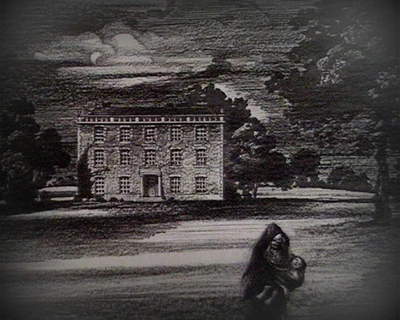“The Mezzotint” is a horror story by the English medievalist and author M. R. James (1862–1936), first published in his Ghost Stories of an AntiquaryCollection of eight short stories by the English medievalist and author M. R. James, first published in 1904. (1904).[1]
The story is told as a third-person narrative. It begins with a hint that Williams, the curator of an art museum implied to be part of Oxford University, and described as a friend of Dennistoun, a fellow academic and the main protagonist in “Canon Alberic’s Scrap-BookHorror story by M. R. James, first published in 1895, about a demon depicted in a picture coming to life.“, may have been influenced by his friend’s experience in southern France.
Synopsis
One of Williams’s responsibilities is the acquisition of English topographical drawings and engravings for his museum, and as such he is in regular contact with a London dealer who specialises in such material. One day he receives a catalogue from the dealer, together with a note recommending a particular item for his attention. It is described in the catalogue as an “Interesting mezzotint: View of a manor-house, early part of the century. 15 by 10 inches; black frame. £2 2s”. The price seems high to Williams, but he requests that the mezzotint be sent on approval, along with a few other items.
Williams is at first unimpressed with the picture, and complains that there are no figures “to give it life”. But the first of his friends he shows it to believes it to be rather good, and points out a figure at the very front of the composition, which Williams had not noticed until then. The next time Williams examines the picture he sees a figure crawling on all-fours towards the house, muffled in a strange black garment with a white cross on the back. The next day Williams show the mezzotint to another friend, and asks him to describe what he sees. The figure has now disappeared, but one of the house’s windows is open. When they examine the picture again later that day, there is a figure striding from the house carrying what looks like a child.
An academic colleague recognises the house in the picture as Anningley Hall, home to Arthur Francis, a talented amateur engraver whose family had become extinct after the last heir disappeared mysteriously in infancy in 1802. He recalls that Francis was very much against poachers, and that he had managed to eject all but one from his estate, a man by the name of Gawdy, the only surviving member of a family who had in earlier times been lords of the manor themselves. One night Gawdy had been discovered poaching, and in the ensuing melee a gamekeeper was shot, and Gawdy was subsequently hanged for the murder.
— M. R. James
The mezzotint is said now to be in the Ashleian Museum, and although carefully watched, has not been seen to change again.
Adaptions
“The Mezzotint” has been adapted for television as an episode of the BBC’s A Ghost Story for Christmas series, in an updated version set in an English cottage in 1922,[2] broadcast from 1971 until 1978.[3]
See also
- M. R. James bibliograList of the works written by M. R. James.phy

